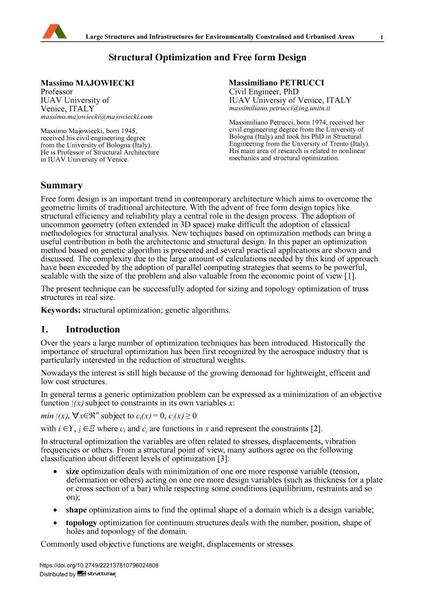Structural Optimization and Free form Design

|
|
|||||||||||
Détails bibliographiques
| Auteur(s): |
Massimo Majowiecki
Massimiliano Petrucci |
||||
|---|---|---|---|---|---|
| Médium: | papier de conférence | ||||
| Langue(s): | anglais | ||||
| Conférence: | IABSE Symposium: Large Structures and Infrastructures for Environmentally Constrained and Urbanised Areas, Venice, Italy, 22-24 September 2010 | ||||
| Publié dans: | IABSE Symposium Venice 2010 | ||||
|
|||||
| Page(s): | 342-343 | ||||
| Nombre total de pages (du PDF): | 8 | ||||
| Année: | 2010 | ||||
| DOI: | 10.2749/222137810796024808 | ||||
| Abstrait: |
Free form design is an important trend in contemporary architecture which aims to overcome the geometric limits of traditional architecture. With the advent of free form design topics like structural efficiency and reliability play a central role in the design process. The adoption of uncommon geometry (often extended in 3D space) make difficult the adoption of classical methodologies for structural analysis. New techiques based on optimization methods can bring a useful contribution in both the architectonic and structural design. In this paper an optimization method based on genetic algorithm is presented and several practical applications are shown and discussed. The complexity due to the large amount of calculations needed by this kind of approach have been exceeded by the adoption of parallel computing strategies that seems to be powerful, scalable with the size of the problem and also valuable from the economic point of view [1]. The present technique can be successfully adopted for sizing and topology optimization of truss structures in real size. |
||||
